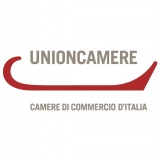
Glass production, though already present in Empoli in the fifteenth century, experienced a significant boost in the second half of the eighteenth century, when Domenico Lorenzo Levantini began producing majolica and glass near Porta Pisana.
It was in this kiln that Francesco Del Vivo and Michele Ristori founded a glassworks in 1830 that remained active until 1984.The factories employed a large part of the work force for the production of glass and for secondary processes, while the decorating of flasks and “bufferia” objects, carried out at home by the “fiascaie”, provided a considerable occupational resource for thousands of women.
The processing of artistic glass and green glass in Empoli was a happy union that resulted in one of the most original expressions of Italian artistic craftsmanship in the 1930s: wide-ranging and diverse production composed of tableware and decorative objects that brought a dash of absolute contemporaneity into the modern home.
From the 1950s to the 1970s, production of coloured glass became a prominent part of the Empoli glasswork scene. The glassmakers promptly responded to the growing demand on the part of Italian and foreign customers with glasses and wine glasses, sets and various types of giftware in white and coloured glass and in crystal.
The originality of the artistic forms of green glass created in Empoli continued to characterise local glassmaking during that period with the “classics” of the now renowned repertoire, accompanied by new models.
The artistic decoration of the glass through painting or engraving also became increasingly common in Empoli glass production, and in those years it assumed a role of primary importance.
The Museum
The glass museum offers a tour that passes through everyday objects (flasks, demijohns, bottles and “bufferia” objects), working tools, documents, photographs and advertising images, illustrating the changes that took place in the production of glass in Empoli: from manual work to semi-automatic or completely mechanised production.
“Green Glass”, a documentary made in 1958 by the great Florentine documentary filmmaker Lionetto Fabbri, accompanies visitors throughout the exhibition.
Camera di Commercio di Firenze



